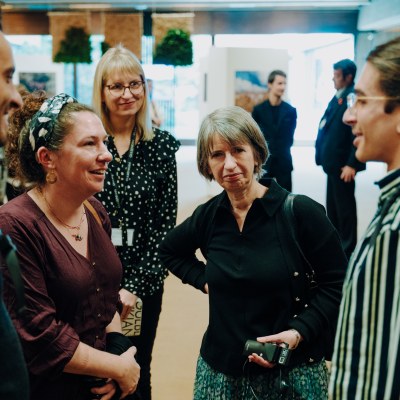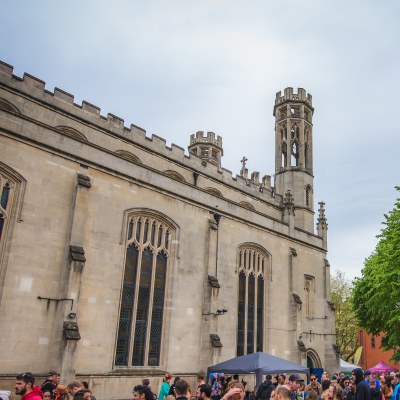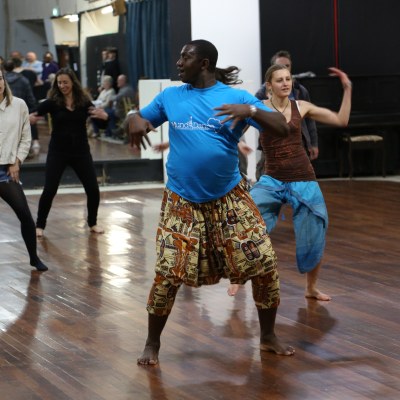The space between us: saving our beacons
![]()
Image credit: Docklands Community Centre/Full Circle
Dubbed by agencies across the voluntary sector as, ‘The Great British Sell-Off’, our shared heritage and civic assets, community and youth centres, libraries and public green spaces are being lost as part of the council funding crisis.
Bristol City Council’s 2022-23 budget announcement is framed with the proviso that further cuts will be needed to plug a £19.5m deficit. This includes, “£3.5m by reviewing the buildings we own across all services.” With the statue debate still raging nationally, we’re sleepwalking into a future that, even prior to the pandemic, has already stripped Bristol of £30m worth of publicly owned assets.
"If we continue to deplete our supply of places where we can read our first book, become a Scout, learn a language or a new dance move or play Bingo in our retirement, we’ll continue down the pathway to polarisation."
The challenge is not in making such spaces loved, it’s in making them viable. We neglect the leaking community centre, or the inaccessible library, whilst trying to ‘level-up’, through investing in ‘transformative’ projects where the cost of the economic impact assessment alone would cover repairs and alterations across community spaces citywide. It’s hard to see how the building of an Arena or a multi-million concert hall refurb compensates us for the loss of the places where we connect with one another, make memories and build our sense of place and belonging in our everyday lives.
As costs of a few projects escalate to keep pace with aspiration, this increases the distance between the ‘viable’ and ‘non-viable’ spaces. If you’re a charity running a building, it’s almost impossible not to get caught on the capital conveyor belt to nowhere, in which we all chase an unattainable vision of the perfect building. Often, like Trinity, it’s what we’re legally constituted to “preserve” our asset. This means, even with the best intentions, we can end up leaving behind our stakeholders and our communities in the pursuit of building back better.
When we get swept up in the notion that a capital project is the priority above all else, we lose sight of the thing that makes buildings important in the first place; it’s the empty space within and the energy it’s filled with that matters more than the bricks and mortar.
We want to make Trinity the best venue it can be, just not at the expense of other venues or those who need the building in the first place and who have been happy using it even at its shabbiest. Balancing the need to future-proof and make a viable and sustainable Centre, whilst taking others with us and ensuring any investment is felt beyond our four walls.
This is why we produced the 100 Beacons report in partnership with other venues and the Council to evidence the contribution of Bristol’s community assets, including the critical role they’ve played in providing local services as part of the COVID19 response.
As part of Bristol’s One City Plan, early indications are a commitment from the Council to invest in improvements to concessionary lettings, such as those referenced in our report. This could provide a lifeline to buildings owned by the city and managed on our behalf. As the budget is still in draft form, we still don’t yet know how this will translate into money to make neighbourhood hubs useable, accessible, green and COVID-Secure. However, this is at least an example of what can be achieved if we work together on what matters to people, to ensure spaces are retained for community use for the benefit of ourselves and future generations.
If we continue to deplete our supply of places where we can read our first book, become a Scout, learn a language or a new dance move or play Bingo in our retirement, we’ll continue down the pathway to polarisation. Such catastrophic loss to communities makes it easy to develop false attachments to an effigy of a slaver not designed with us in mind, whilst increasing our resentment towards those we see as encroaching on any space we feel we have left, be it the immigrant or the gentrifier.
If only those advocating to preserve commemorative statues put even a fraction of that energy into campaigning to save their local heritage asset or civic space, volunteer at their local community or youth centre, or set up a regular social activity in their local library we’d all feel the positive effects. As we continue to navigate the isolating impact of a period of successive restrictions, it’s the spaces that reduce the distance between us that help us to level-up, culturally, socially and economically.
Emma Harvey, CEO
Read the report: A Community Canvas - building the case for community infrastructure 2022 - 2026








